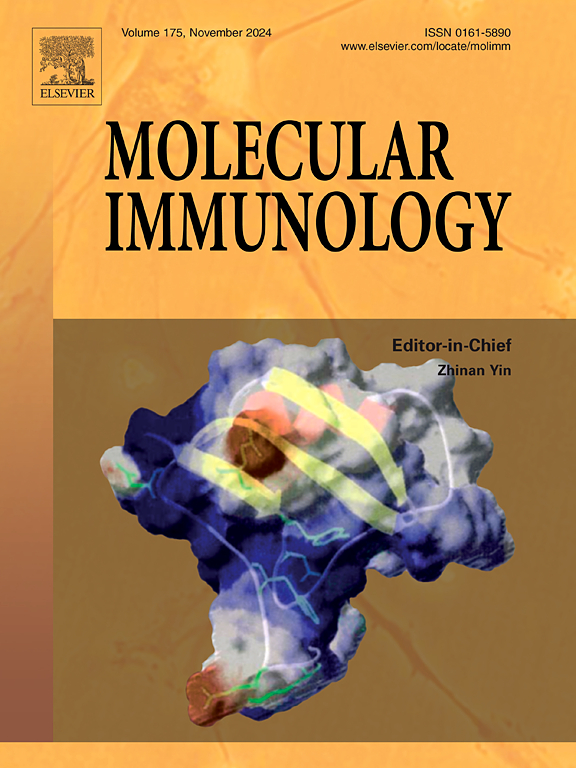JAK/STAT pathway in myocardial infarction: Crossroads of immune signaling and cardiac remodeling
IF 3
3区 医学
Q2 BIOCHEMISTRY & MOLECULAR BIOLOGY
引用次数: 0
Abstract
Myocardial infarction (MI) initiates a robust immune-inflammatory response in which dysregulated cytokine signaling exacerbates tissue damage and adverse cardiac remodeling. The Janus kinase/signal transducer and activator of transcription (JAK/STAT) pathway serves as a key mediator of cytokine signaling and immune cell activation, playing a dual role in post-MI outcomes. On one hand, JAK/STAT activation supports cardioprotective mechanisms such as angiogenesis and anti-apoptotic signaling; on the other hand, its excessive or prolonged activation contributes to maladaptive inflammation, fibrosis, and heart failure. This review examines how pro-inflammatory cytokines (e.g., IL-6, TNF-α) and immune cells (e.g., macrophages, neutrophils) activate the JAK/STAT pathway in ischemic myocardium. We discuss the pathway’s crosstalk with inflammatory signaling networks, including NF-κB, MAPK, and PI3K/Akt, and evaluate the potential of repurposing JAK inhibitors (e.g., ruxolitinib) to modulate immune responses after MI, drawing insights from clinical trials in autoimmune diseases. Unresolved challenges such as cell-specific effects of JAK/STAT modulation and the need for biomarker-driven therapies are also highlighted. By synthesizing current preclinical and clinical evidence, this review proposes a framework for immune-targeted strategies aimed to improving cardiac outcomes following MI.
心肌梗死中的JAK/STAT通路:免疫信号和心脏重构的十字路口
心肌梗死(MI)启动一个强大的免疫炎症反应,其中失调的细胞因子信号加剧了组织损伤和不良的心脏重塑。Janus激酶/信号转导和转录激活因子(JAK/STAT)通路是细胞因子信号传导和免疫细胞激活的关键介质,在心肌缺血后的预后中起双重作用。一方面,JAK/STAT激活支持血管生成和抗凋亡信号等心脏保护机制;另一方面,它的过度或长时间激活会导致适应性不良的炎症、纤维化和心力衰竭。本文综述了促炎细胞因子(如IL-6、TNF-α)和免疫细胞(如巨噬细胞、中性粒细胞)如何激活缺血心肌中的JAK/STAT通路。我们讨论了该通路与炎症信号网络(包括NF-κB、MAPK和PI3K/Akt)的相互作用,并评估了重新利用JAK抑制剂(如ruxolitinib)调节心肌梗死后免疫反应的潜力,并从自身免疫性疾病的临床试验中获得见解。还强调了未解决的挑战,如JAK/STAT调节的细胞特异性效应和对生物标志物驱动疗法的需求。通过综合目前的临床前和临床证据,本综述提出了一个旨在改善心肌梗死后心脏预后的免疫靶向策略框架。
本文章由计算机程序翻译,如有差异,请以英文原文为准。
求助全文
约1分钟内获得全文
求助全文
来源期刊

Molecular immunology
医学-免疫学
CiteScore
6.90
自引率
2.80%
发文量
324
审稿时长
50 days
期刊介绍:
Molecular Immunology publishes original articles, reviews and commentaries on all areas of immunology, with a particular focus on description of cellular, biochemical or genetic mechanisms underlying immunological phenomena. Studies on all model organisms, from invertebrates to humans, are suitable. Examples include, but are not restricted to:
Infection, autoimmunity, transplantation, immunodeficiencies, inflammation and tumor immunology
Mechanisms of induction, regulation and termination of innate and adaptive immunity
Intercellular communication, cooperation and regulation
Intracellular mechanisms of immunity (endocytosis, protein trafficking, pathogen recognition, antigen presentation, etc)
Mechanisms of action of the cells and molecules of the immune system
Structural analysis
Development of the immune system
Comparative immunology and evolution of the immune system
"Omics" studies and bioinformatics
Vaccines, biotechnology and therapeutic manipulation of the immune system (therapeutic antibodies, cytokines, cellular therapies, etc)
Technical developments.
 求助内容:
求助内容: 应助结果提醒方式:
应助结果提醒方式:


